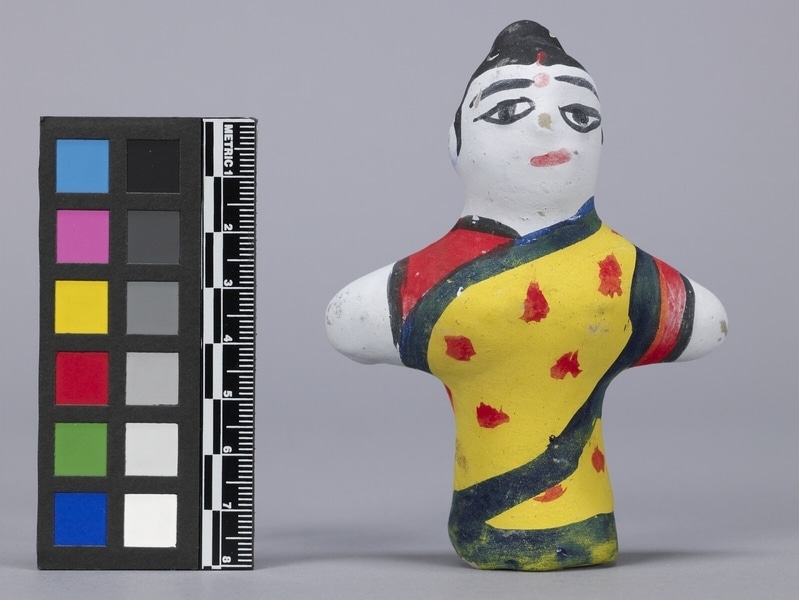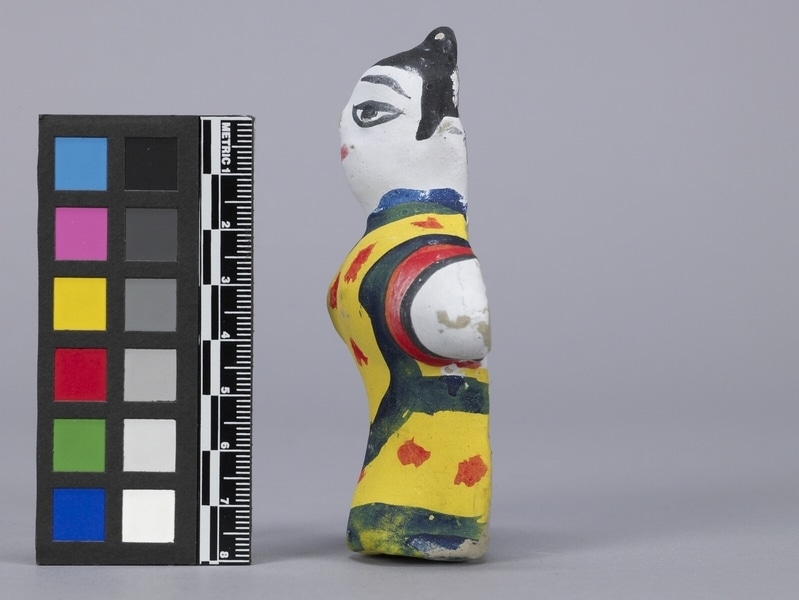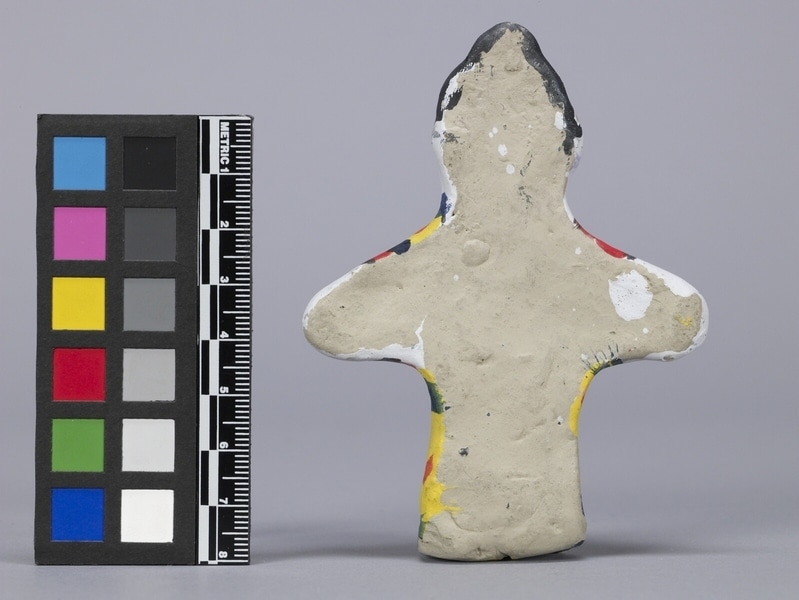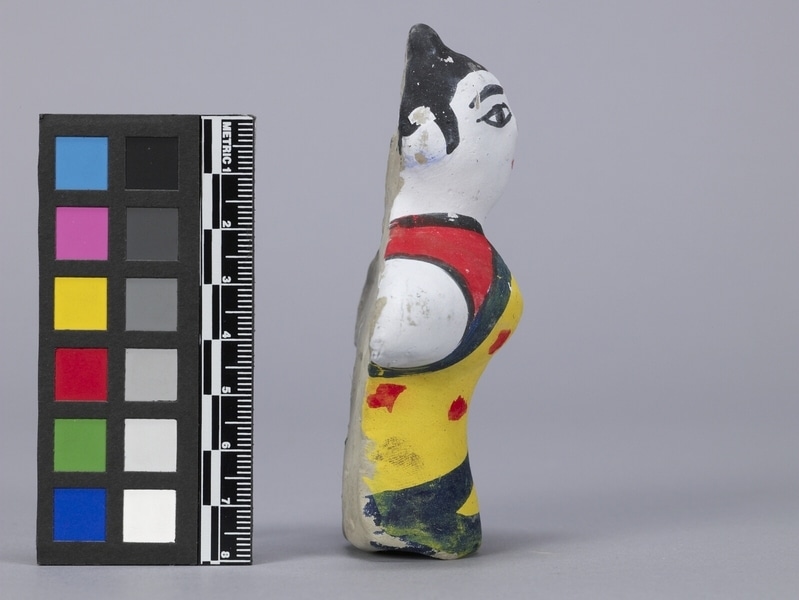Doll Item Number: Ef233 from the MOA: University of British Columbia




Description
A small human figure in white modelled clay. Simple form suggests female torso with stubbed arms and black hair knotted at the top of the head and flowing down the sides. The eyes are black dots surrounded by a black oval line with one horizontal black line above. There is a vertical red line and red dot along the middle of the forehead. The mouth is a small pink line. Wearing a yellow top accentuated with red dots and outlined with dark blue. Back is unfinished.
History Of Use
Bengali potters of the (Kumara) Kumbhakara caste are heirs to a long tradition in village and urban areas. Production of clay pots and vessels for everyday use is their regular occupation. However, images for votive offerings are also important and are variously represented as fertility figures, protective symbols (horses, elephants), or gods. The animal and human figures sold as toys have a close affinity in shape and character to the votive images. In fact, the same image often fulfills both purposes. Toy making is a vigorous industry among Bengali potters and helps supplement their incomes.
Cultural Context
toy
Item History
- Made in Alipurduar, West Bengal, India before 1976
- Collected during 1976
- Owned by Stephen Inglis before December 2, 1977
- Received from Museum of Anthropology Donations Fund (Funding source) and Stephen Inglis (Seller) on December 2, 1977
What
- Name
- Doll
- Identification Number
- Ef233
- Type of Item
- doll
- Material
- gouache paint and clay
- Manufacturing Technique
- modelled and painted
- Overall
- height 10.2 cm, width 7.8 cm, depth 3.1 cm
Who
- Culture
- Bengali
- Previous Owner
- Stephen Inglis
- Received from
- Museum of Anthropology Donations Fund (Funding source) and Stephen Inglis (Seller)
Where
- Holding Institution
- MOA: University of British Columbia
- Made in
- Alipurduar, West Bengal, India
When
- Creation Date
- before 1976
- Collection Date
- during 1976
- Ownership Date
- before December 2, 1977
- Acquisition Date
- on December 2, 1977
Other
- Item Classes
- ceramics
- Condition
- good
- Accession Number
- 0411/0031